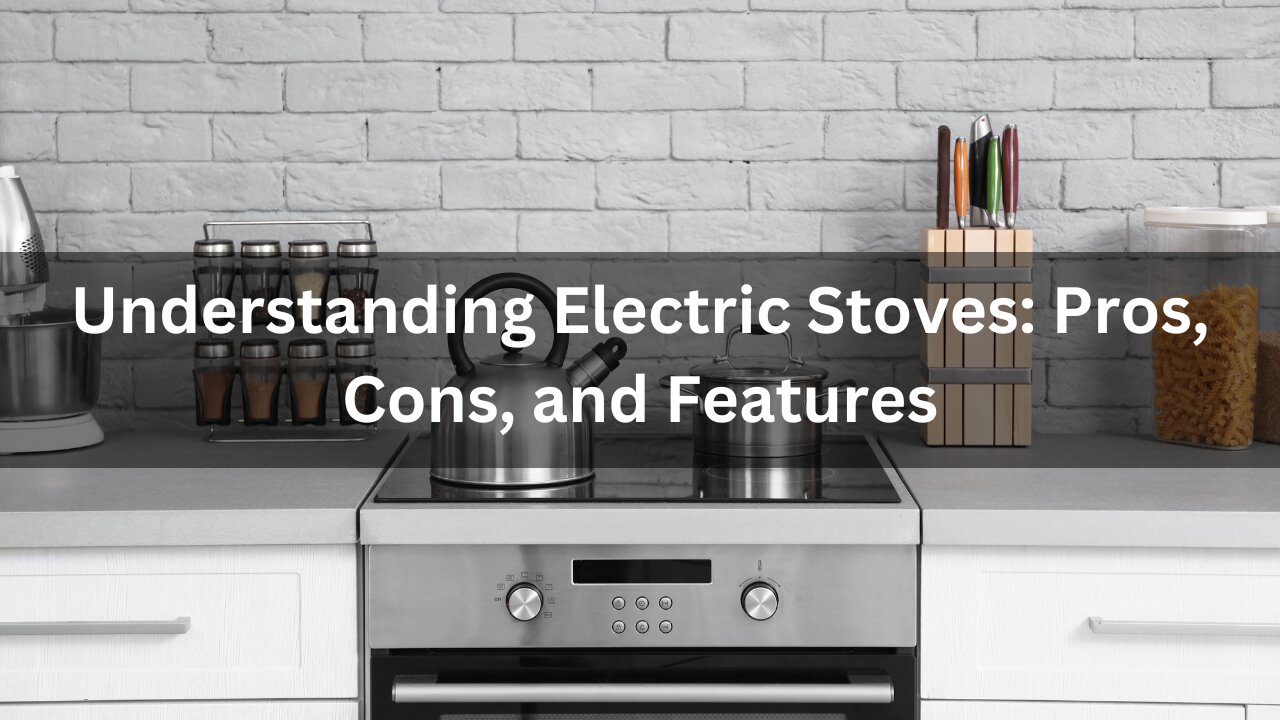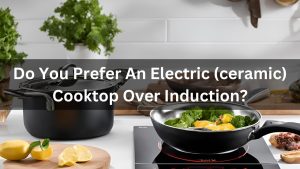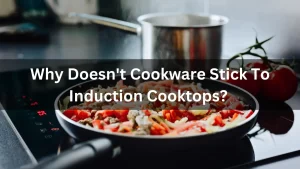In the ever-evolving landscape of kitchen appliances, electric stoves have captured the interest of both home cooks and professionals. With advancements in energy efficiency, safety, and design, choosing between electric and gas stoves in 2024 is more complex than ever. So, what makes electric stoves stand out in today’s kitchens?
Imagine preparing meals in a sleek, modern kitchen where convenience, safety, and style come together seamlessly. A stove that provides consistent heating, ease of cleaning, and modern controls—it sounds ideal. But like any appliance, electric stoves come with trade-offs.
This guide will explore their advantages and drawbacks, break down their features and types, and provide practical insights to help you make the best decision for your kitchen.
Table of Contents
Why Switch to Electric Stovetops?
Electric stoves are becoming increasingly popular in Australia and worldwide. They offer a reliable, easy-to-use alternative to gas stoves, though they are not without drawbacks. Below is a comparison of the pros and cons of electric stoves to help you weigh your options.
| Pros | Cons | |
| 1 | Stable Surface: Flat surfaces are stable for all types of cookware. | Power Outage Dependency: Electric stoves are unusable during power outages. |
| 2 | No Open Flame: Eliminates the risk of open flame, reducing fire hazards. | Higher Electricity Cost: Can be more expensive to operate due to electricity costs compared to natural gas. |
| 3 | Modern Appearance: Often have a sleek, modern look that fits well in contemporary kitchens. | Heat Retention: The cooktop retains heat for a while after being turned off, which can be a hazard. |
| 4 | Versatility: Can accommodate a variety of cookware, including those not suitable for gas stoves. | Repairs: Can be more expensive to repair than gas stoves. |
| 5 | Temperature Control: Models with digital controls allow precise temperature settings. | Fragile Surface: Glass-ceramic surfaces can crack or scratch easily. |
| 6 | Safer Indoor Air Quality: No combustion means no risk of indoor pollutants like carbon monoxide. | Less Responsive: Temperature adjustments can be slower compared to gas stoves. |
| 7 | Energy Efficiency: Induction models are highly energy-efficient, heating only the cookware and not the surrounding area. | Cookware Restrictions: Induction cooktops require compatible cookware, which can be an added expense. |
| 8 | Easy to Clean: Smooth, flat surfaces are easier to wipe down compared to the grates and burners of gas stoves. | Slow Cooling: The burners take longer to cool down after being turned off, which can be a safety concern. |
| 9 | Even Heating: Electric stove tops provide consistent and even heating, which is ideal for precise cooking. | Slower Heating: They generally heat up slower than gas stoves. |
How Do Electric Stoves Work?
Electric stoves convert electrical energy into heat through heating elements (either coils or embedded in smooth glass-ceramic surfaces). These elements generate heat when electricity flows through them, creating resistance.
Here’s how the heating process works:
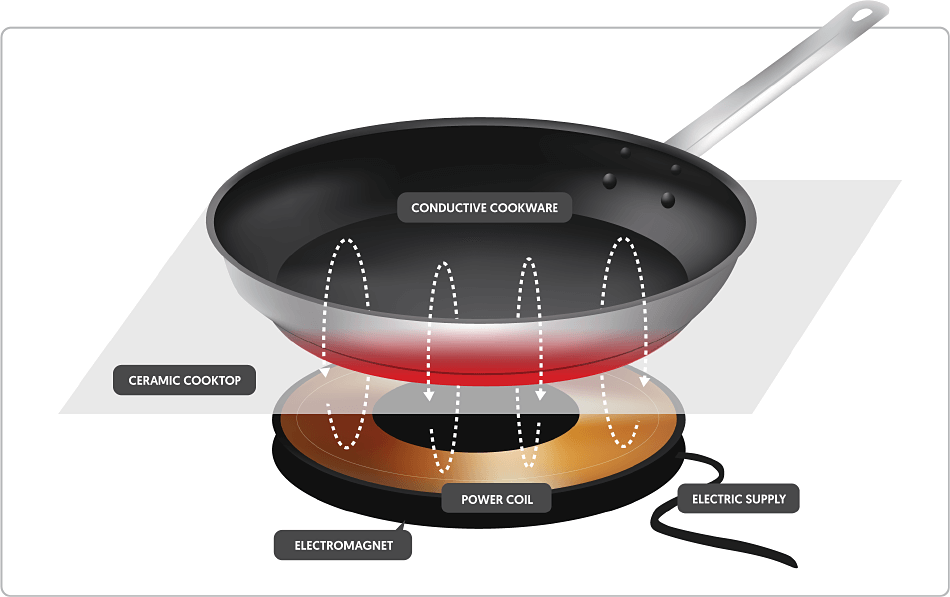
- Electric current flows through a coil or heating element.
- The element glows and transfers heat through the surface (using infrared energy).
- Control knobs or digital panels allow temperature adjustment by regulating electricity flow.
- Thermostats monitor the heat and cycle the power on and off to maintain consistent temperatures.
8 Key Parts of an Electric Stove
Heating Elements:
- Coil Elements: Traditional, removable coils heat up when powered.
- Smooth Top Elements: Embedded beneath a glass surface, using infrared energy for even heating.
Control Knobs/Panels:
- Used to adjust heat levels.
- Digital options offer precise settings for advanced cooking needs.
Thermostat:
- Regulates temperature by cycling heating elements on and off.
Indicator Lights:
- Provide a safety signal when burners are hot or in use.
Oven (if included):
- Contains separate elements for baking and roasting.
- May feature convection fans for even heat distribution.
Timer:
- Tracks cooking time and alerts users when complete.
Temperature Sensor:
- Some models include sensors for precise heat adjustments.
Drip Pans:
- Catch spills for easier cleaning (typically in coil stoves).
Types of Electric Stovetops
1. Solid Hotplate Stove Tops
- Features: Metal coils or plates heat when powered.
- Pros: Affordable, durable, easy to replace parts.
- Cons: Less efficient, harder to clean.
2. Ceramic Stove Tops
- Features: Smooth glass-ceramic surface with embedded elements.
- Pros: Modern look, easy to clean, even heat distribution.
- Cons: Prone to scratches and cracks, more expensive.
3. Induction Stove Tops
- Features: Use electromagnetic fields to heat cookware directly.
- Pros: Fast, energy-efficient, precise control, and safer.
- Cons: Requires compatible cookware and tends to be expensive.
Binary Heating Elements: What You Should Know
Electric stoves use binary heating—the elements are either fully on or off. This design saves energy and ensures consistent heat levels. In ceramic models, you may notice the element glowing intermittently as it cycles on and off. The glass-ceramic surface buffers these fluctuations, resulting in relatively steady heat at the cooking surface.
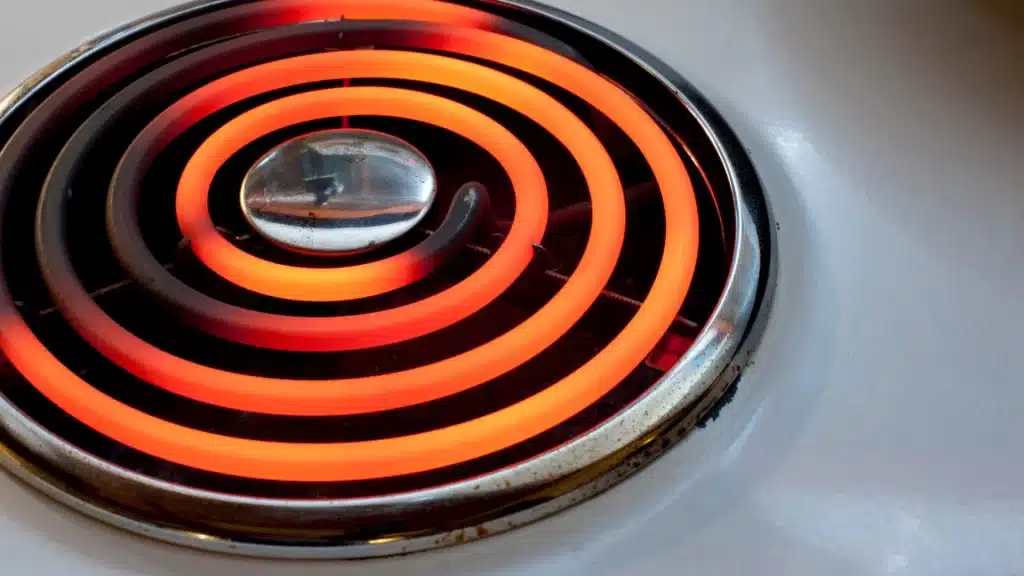
How to Cook Effectively on an Electric Stove?
Cooking on an electric stove requires a few adjustments:
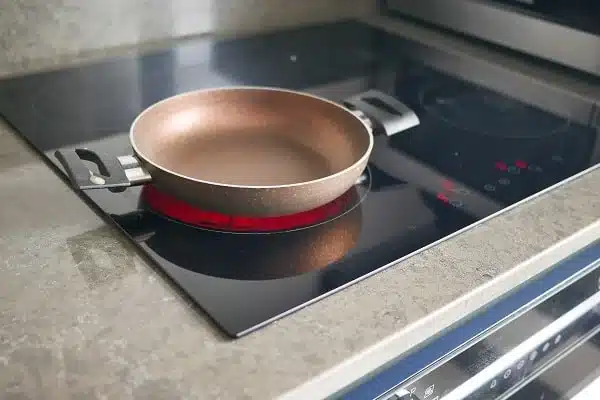
- Preheat properly: Electric burners take longer to heat up.
- Use heavy-bottomed cookware: Stainless steel or cast iron ensures even cooking.
- Monitor heat retention: Electric burners retain heat longer, so adjust or move pans as needed.
- Adapt to slower response times: If you need precise control, consider using an induction stove for better temperature management.
Top 8 Features of an Electric Stove
- Heating Elements:
- Traditional coils or radiant surfaces.
- Temperature Controls:
- Knobs or digital panels for precision.
- Thermostat:
- Ensures consistent heat levels.
- Indicator Lights:
- Signal when burners are in use or still hot.
- Timer:
- Tracks cooking time.
- Temperature Sensors:
- Automatic heat adjustments for perfect results.
- Oven Options:
- Some models include advanced ovens with convection settings.
- Safety Features:
- Automatic shut-off and child locks.
Electric vs. Gas Stoves: Which Is Better?
Your choice between electric and gas stoves will depend on your cooking style and kitchen needs.

Advantages of Electric Stoves
- Even, consistent heating—ideal for baking and simmering.
- Safer indoor air quality—no combustion emissions.
- Easy to install—no need for a gas line.
- Modern features like digital controls and self-cleaning ovens.
Advantages of Gas Stoves
- Instant heat control—great for searing and stir-frying.
- Works during power outages—reliable in emergencies.
- Lower energy costs—depending on gas prices.
- More responsive temperature adjustments.
Ultimately, electric stoves excel in ease of use, safety, and energy efficiency, while gas stoves offer more precise control and faster heating. Your decision should align with your cooking habits, safety preferences, and energy costs in your area.
Are Electric Stoves Better for Your Health?
Electric stoves can offer significant health advantages over gas stoves:
- Improved Indoor Air Quality
- Unlike gas stoves, electric stoves do not produce combustion gases such as carbon monoxide, nitrogen dioxide, or formaldehyde.
- Gas stoves release harmful pollutants like benzene, nitrogen dioxide, and particulate matter, which can aggravate respiratory conditions.
- A 2022 study found that 12.7% of all childhood asthma cases in the U.S. are linked to gas stove use.
- No Open Flames
- Electric stoves reduce the risk of burns and accidental fires because they do not rely on open flames.
- Consistent Heat Control
- They provide even heating, helping prevent overcooking or burning food, which can produce harmful compounds like acrylamide in certain foods.
Potential Drawbacks
- Hot Surfaces: Electric stove surfaces can remain hot after being turned off, posing a burn risk if touched too soon.
- Non-stick Cookware Caution: Overheating damaged non-stick cookware can release toxic chemicals, so regular inspection is essential.
Overall, electric stoves may promote better indoor air quality and kitchen safety, but proper use, maintenance, and ventilation are still crucial for health benefits.
Why Don’t Electric Stove Coils Electrify Metal Utensils?
Electric stoves with coil burners are designed to prevent electrical shock even when metal utensils come into contact with them. Here’s how:
- Insulated Heating Element
- The coil is coated with ceramic or fiberglass insulation, preventing electrical current from reaching the surface.
- Internal Heating Design
- Inside the coil, an insulated resistance wire generates heat. The insulation ensures the electrical current stays inside the coil and does not leak.
- No Current on the Surface
- The insulating coating conducts heat but blocks electricity, ensuring that metal utensils touching the coil remain safe.
- Grounding and Safety Mechanisms
- The coil’s design includes grounding to prevent electrical hazards in case of insulation failure.
In comparison, induction cooktops generate heat directly inside compatible cookware through magnetic fields, which eliminates surface heat and further reduces electrical shock risks.
How to Get Your Electric Stove Working?
If your electric stove isn’t functioning, follow these troubleshooting steps:
1. Check Power Supply
- Ensure the stove is plugged in and the outlet is working.
- Verify the circuit breaker isn’t tripped, especially if the stove is hardwired.
2. Verify Burner Placement
- For coil stoves, ensure the burners are properly seated in their receptacles.
3. Inspect Burners and Elements
- Check for visible damage to the burners or elements. If damaged, replace them.
4. Adjust Controls Properly
- Make sure the knobs or digital controls are correctly set to the desired heat level.
5. Clean the Cooktop
- For smooth-top stoves, ensure the surface is clean, as debris can impact heat transfer. Use a glass-ceramic cleaner if needed.
6. Test the Oven (if Applicable)
- If the stove has an oven, verify that the correct mode and temperature are selected.
7. Consult the Manual
- The user manual provides specific instructions and solutions for common issues.
8. Reset or Power Cycle the Stove
- Unplugging the stove for a few minutes or resetting the circuit breaker may fix minor electrical issues.
9. Contact a Professional
- If the issue persists, seek professional help to diagnose and repair potential faults.\
Key Takeaways
✦ Electric stoves are powered by electricity, making them simple to use and install.
✦ They come in two types: coil burners and smooth glass tops.
✦ Benefits include even heating, affordability, and safety.
✦ Drawbacks include slow heat-up times and dependence on electricity.
✦ Popular features include self-cleaning ovens, convection cooking, and warming zones.
By following these steps, you should be able to identify and resolve common issues that might prevent your electric cooktop stove from working correctly.
Conclusion
In conclusion, electric stoves offer a modern, convenient alternative to gas stoves, providing consistent heat, easy cleaning, and enhanced safety. They are generally more cost-effective to purchase and install and do not release harmful pollutants, making them a healthier option for indoor air quality. However, they can be slower to heat up, less responsive to temperature changes, and may increase energy consumption.
Choosing between electric and gas stoves depends on individual cooking needs and preferences. Electric stoves provide even heating, ideal for baking and simmering, while gas stoves offer immediate heat control for tasks like searing. Understanding how electric stoves work, and their various features can help you maximize their benefits and adapt to their unique cooking characteristics. If issues arise, following troubleshooting steps can ensure proper functionality and professional help is available.
FAQs
Can I use any cookware on an induction stove?
No, induction stoves require cookware made of ferrous materials like cast iron or stainless steel.
Do electric stoves consume a lot of energy?
Electric stoves, particularly induction models, are energy-efficient and can help lower energy bills over time.
How do I clean a smooth-top electric stove?
Use a non-abrasive cleaner and a soft cloth to wipe down the surface after each use to prevent scratches.
Are electric stoves safe for homes with children?
Yes, electric stoves, especially induction models, are safer as they do not have an open flame, and many models feature safety locks.
What happens if there is a power outage?
Electric stoves will not work during a power outage, unlike gas stoves, which can often be lit manually.

